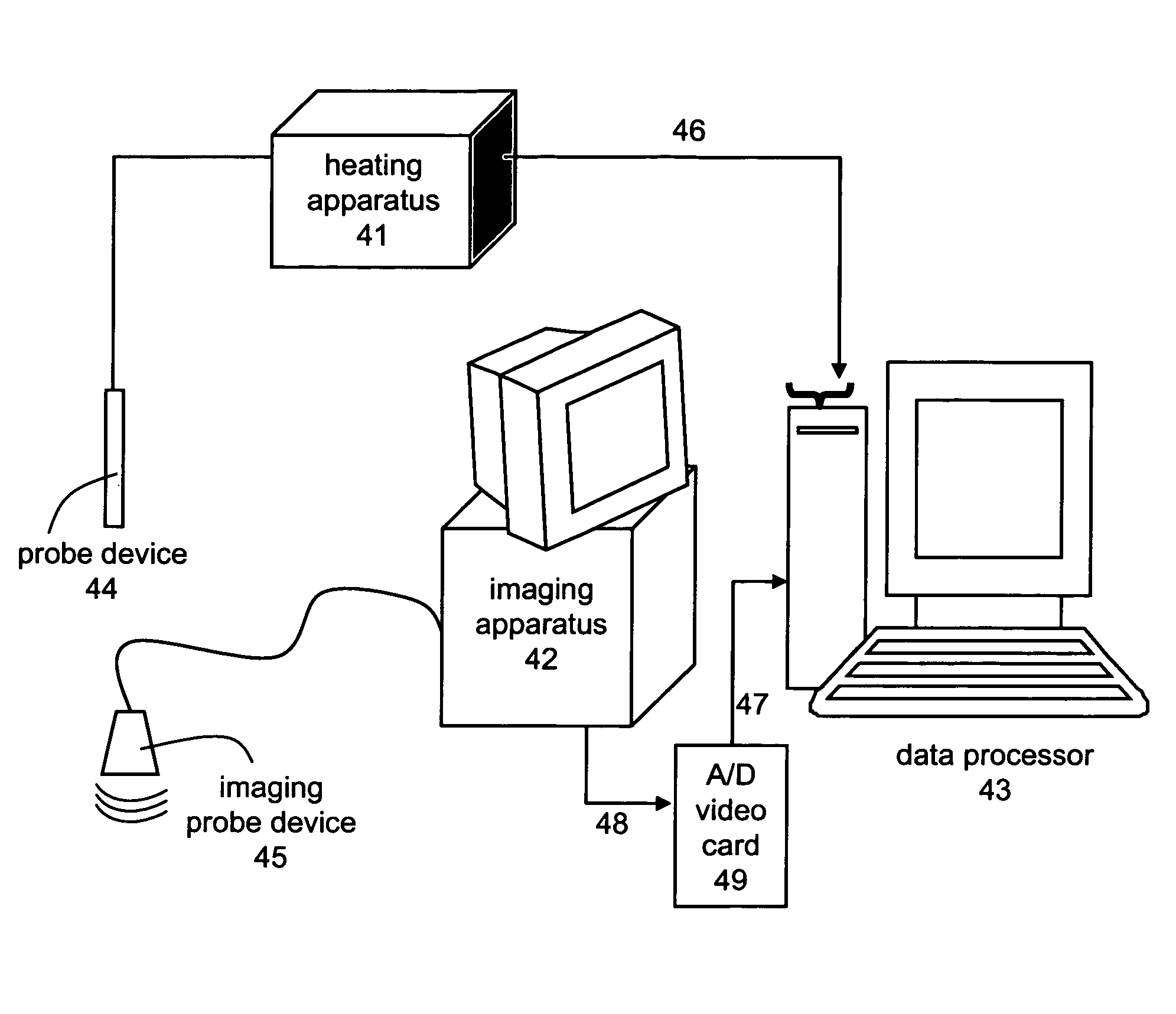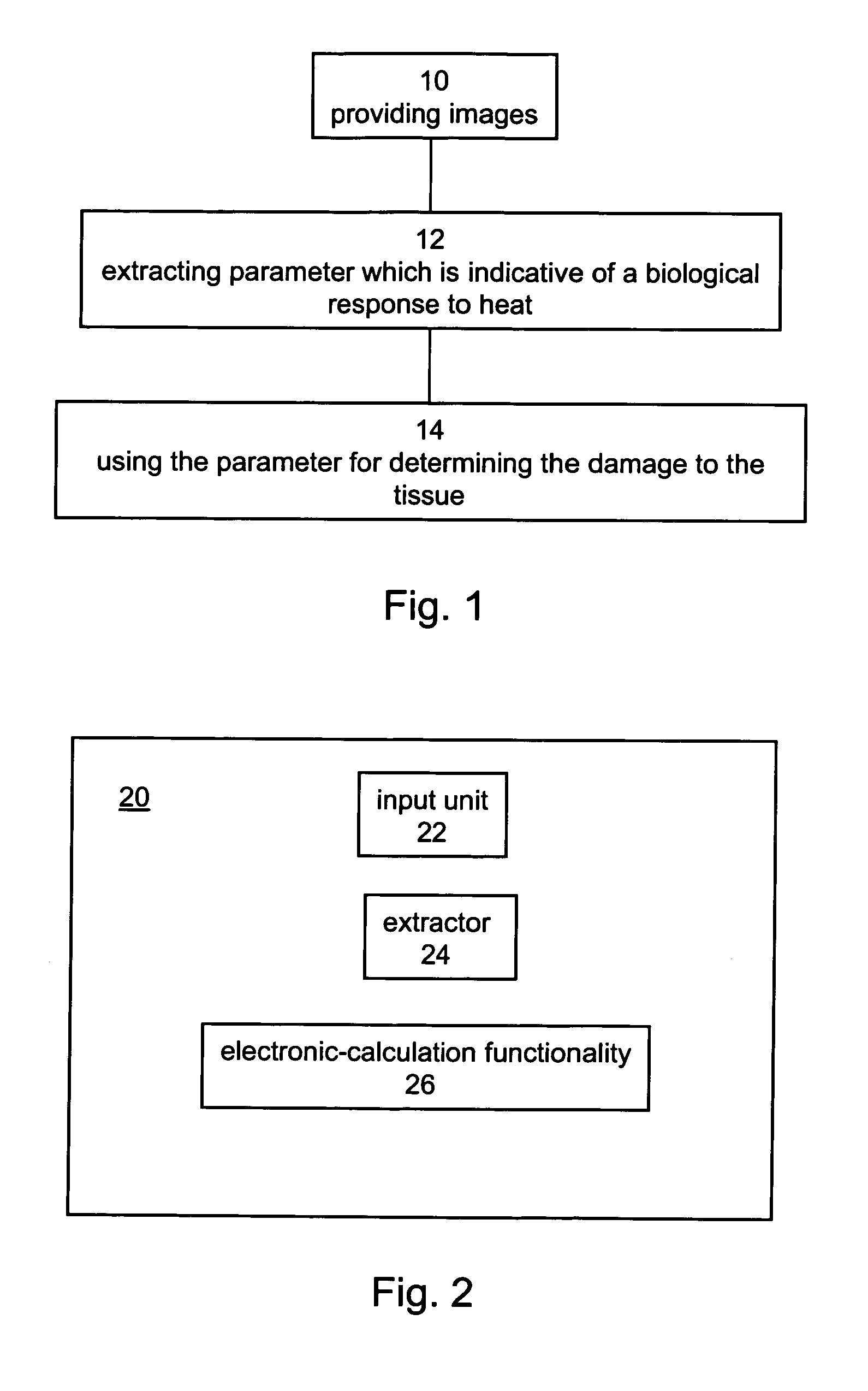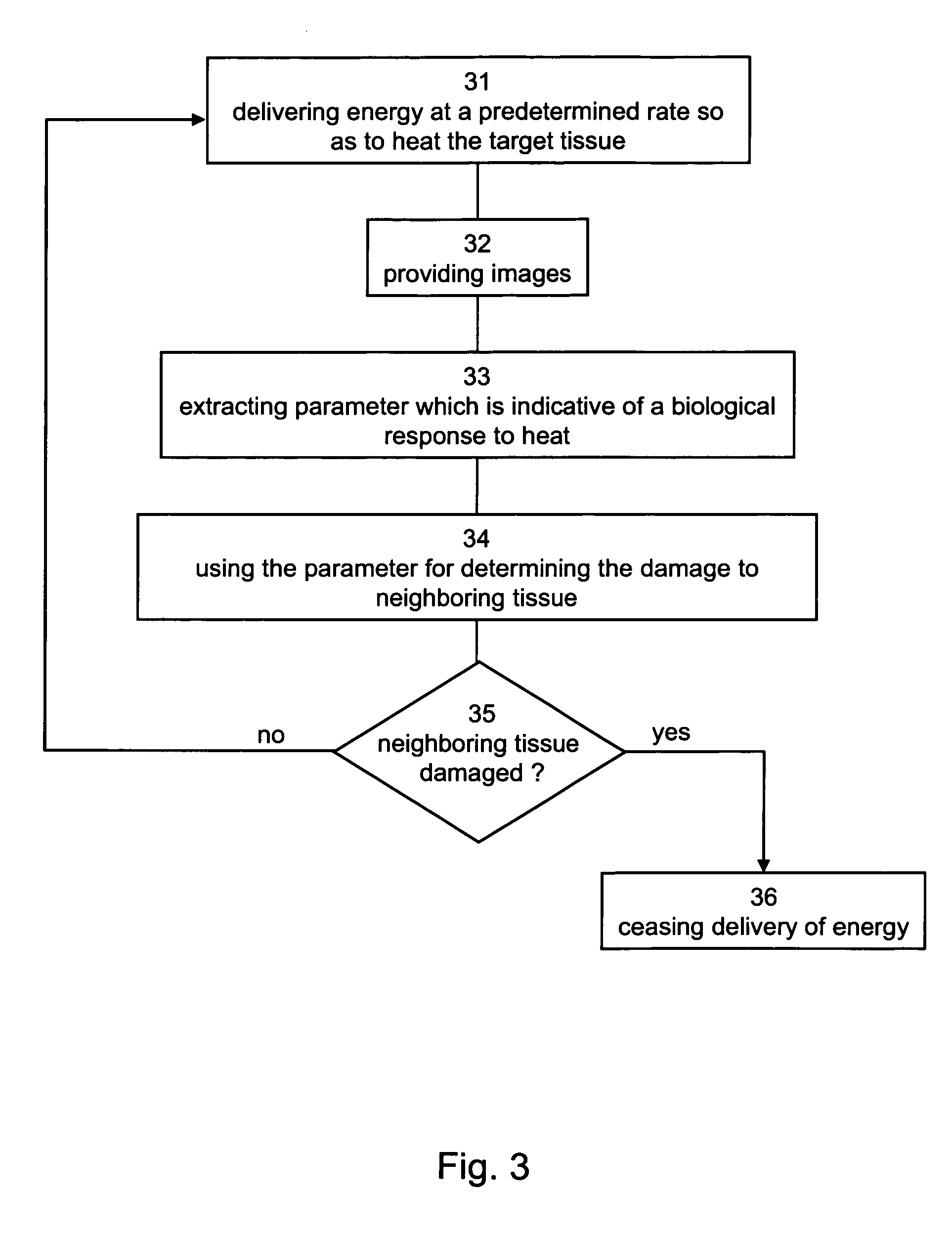Method and system for monitoring ablation of tissues
a tissue ablation and monitoring system technology, applied in the field of tissue ablation monitoring, can solve the problems of tissue thermal injury, radiofrequency ablation, overheating of the tissue,
- Summary
- Abstract
- Description
- Claims
- Application Information
AI Technical Summary
Problems solved by technology
Method used
Image
Examples
example 1
Blood Perfusion
[0109]In an experiment performed by the Inventors of the present invention, a 2 cm diameter tumor in a mouse was ablated for 15 minutes using a 10 watt laser operating in a pulsed mode of 1 second “on,” 1 second “off.” During the ablation, the emitted energy was 4500 joules. For a fifty percent transmission efficiency of the optical fiber, this amounts to 2250 joules, delivered to the tissue. A large portion of the incident energy is dispersed by blood perfusion. There is a considerable level of uncertainty of the exact amount of energy which is dispersed by blood perfusion, due to several factors, such as the tumor stage, which can be in a varying degree of necrosis; and the level of blood vessel coagulation induced by the laser irradiation.
[0110]Relevant perfusion data range from 5 to 50 (measured in units of ml blood per 100 g tissue per minute), depending on tissue characteristics [Gunnar Brix et al., “Regional Blood Flow, Capillary Permeability, and Compartmental...
example 2
Analysis of Ultrasound Images
[0112]Following is a description of an algorithm, suitable for analyzing ultrasound images. The algorithm can be tangibly embodied by a machine-readable memory having a program of instructions executable by the machine for executing the algorithm.
[0113]It is to be understood that the algorithm presented in the present, example, including the number, order and nature of the assignments and criteria which are employed thereby, are not to be considered as limiting.
[0114]The algorithm is preferably executed by a data processor having an input unit for receiving image information. The image information is preferably a plurality of digital signals, representing gray levels or colors of picture elements (e.g., pixels) of the ultrasound image. In principle, the steps of the algorithm are preferably applied on several picture elements, more preferable on all picture elements of the neighboring tissue, most preferably on all the picture elements of the ultrasound ...
example 3
Ablating a Colon Cell Carcinoma by Laser
[0119]Materials and Methods
[0120]BALB / c mice were implanted subcutaneously with C26 colon cell carcinoma. Tumors were treated by a SHARPLAN 6020-diode laser system, emitting at 825 nm, using an interstitial fiber optic probe. During treatment, tissue effects were monitored and recorded by an ultrasound apparatus (Vivid3, General Electric) and the temperature was measured with thermocouples inserted in the tumor at different distances from the fiber optic probe end.
[0121]Twenty-four hours after treatment the mice were injected intraperitoneally with 1% Evans blue dye, and 24 hours later the mice were sacrificed, tumors were excised and 2-3 mm thick cross-section slices were cut. A section from the central area of each tumor was photographed with a color digital camera (model Camedia C-2000Z, Olympus) and compared with the ultrasound images obtained during monitoring. The injection of the dye into the blood system selectively stained viable tiss...
PUM
 Login to view more
Login to view more Abstract
Description
Claims
Application Information
 Login to view more
Login to view more - R&D Engineer
- R&D Manager
- IP Professional
- Industry Leading Data Capabilities
- Powerful AI technology
- Patent DNA Extraction
Browse by: Latest US Patents, China's latest patents, Technical Efficacy Thesaurus, Application Domain, Technology Topic.
© 2024 PatSnap. All rights reserved.Legal|Privacy policy|Modern Slavery Act Transparency Statement|Sitemap



